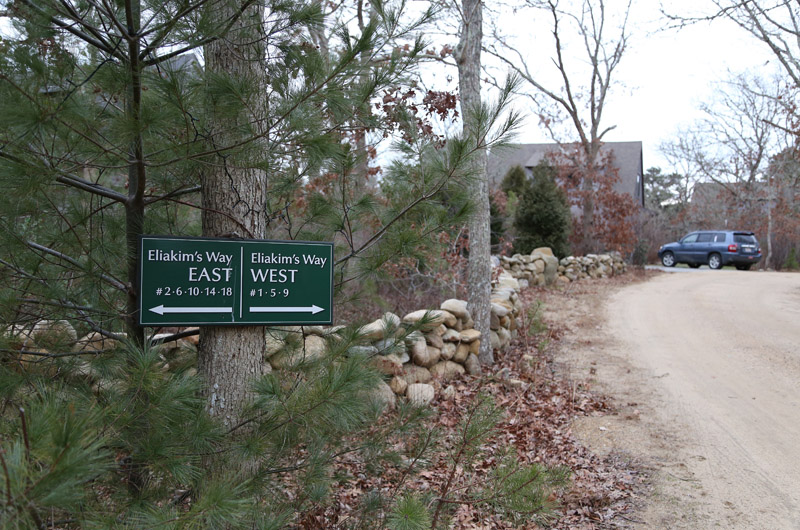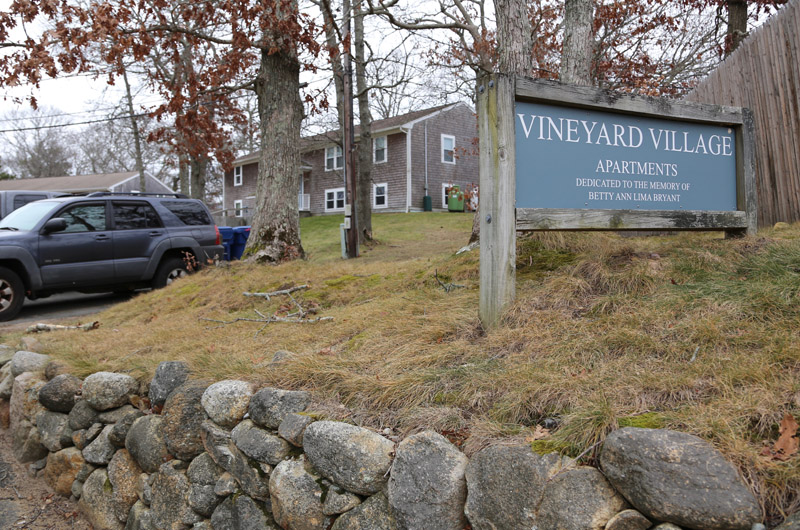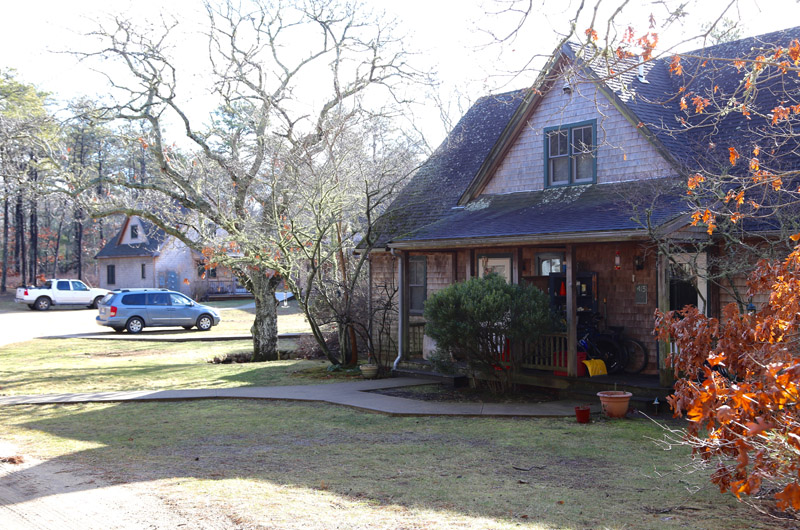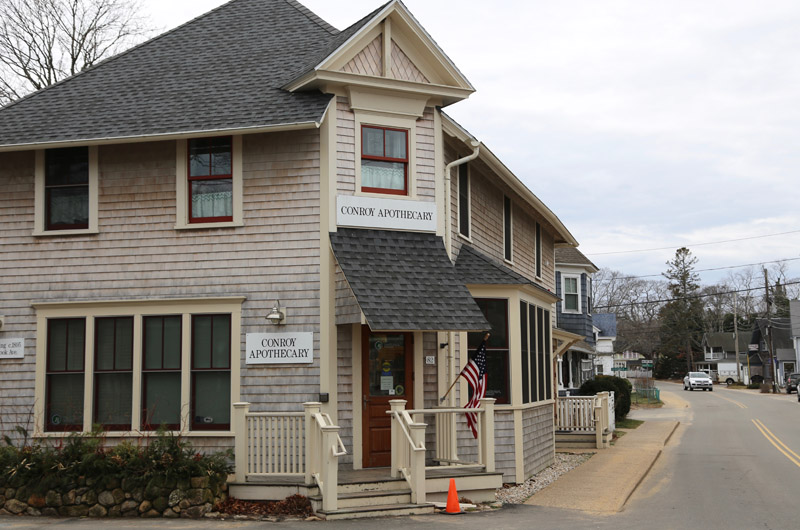Seventeen years ago, in the midst of a market upturn, and with high-end real estate sales stronger than ever, housing concerns for year-rounders reached a new height.
A public symposium in the spring of 2000 aired many longstanding concerns surrounding the shortage of year-round housing on the Island and pointed to some key solutions. Town and state leaders, housing experts and residents packed into the Grange Hall in West Tisbury. Free child care during the event was offered at the West Tisbury Congregational Church across the way.
Derrill Bazzy, a longtime housing advocate who now works for the nonprofit Island Housing Trust, said the gathering helped usher in a new era. “It was a watershed moment for housing on Martha’s Vineyard,” he recalled in a recent interview. Several community groups formed in the following months, and in 2001, Aquinnah and Chilmark became the first Vineyard towns to adopt the state Community Preservation Act, spurred largely by its provision of funds for affordable housing. Edgartown, Oak Bluffs, Tisbury and West Tisbury followed suit in 2005.
Many of the problems that took center stage in 2000 were nothing new for the Island, and all of them persist to some degree — including a pressing need for year-round rental housing, a top-heavy real estate market with home ownership mostly out of reach for year-round residents, and a continuing struggle to maintain an essential workforce.
“I feel like Rip Van Winkle,” Cape and Islands Rep. Eric Turkington said in his opening remarks at the symposium. “Ten years ago when I was elected to the house of representatives, we had this same issue.”
Now in the midst of another market upturn after the national recession that began in 2007, housing issues have again taken center stage. “That’s actually an ebb and flow we are always going to have here,” said Mr. Bazzy, who also serves on the affordable housing committee and community preservation committee in Aquinnah. “In once sense it’s good,” he said, noting the renewed attention and sense of mission among residents. “But we’ve got to have a continuous effort between the crisis points.”
The all-Island planning board — which Mr. Bazzy said reflected a level of town commitment unheard of in 2000 — launched an initiative last year to produce state-certified housing production plans in every town and for the Island as a whole. A series of public workshops on housing issues wrapped up last fall, and draft reports are expected next week.
Meanwhile, conversations in town halls, on the street and online often turn to the issue of housing, with many, if not most, recognizing a need for more year-round rentals for low and moderate-income residents. As in many communities across the country, however, even those who support the idea of affordable housing may find themselves battling such projects in their own neighborhoods. But some advocates see opposition fading as economic cycles continue and more housing developments become part of the community.
“Everyone on this Island has an idea about how to solve the problem,” said Dean Rosenthal, the Dukes County associate commissioner for the homeless, ticking off a few examples: dormitory housing, a room occupancy tax, a housing bank akin to the Martha’s Vineyard Land Bank. People may not always fully understand the issues, he said, “but they are engaged.”
The public workshops last fall helped raise awareness, with reams of data condensed into bullet points and graphics for the public. But project managers also acknowledged the value of learning directly from residents. “You have to humble yourself when working on a project like this,” said Judi Barrett of the consulting firm RKG Associates, who is working on the plans along with JM Goldson. “The data do not tell the whole story.”
At least three official studies since 2000, and the Martha’s Vineyard Commission’s 2009 Island Plan, have shed light on the Island’s perpetual housing problem. In addition, a 2001 report by Development Cycles in Amherst included a major survey highlighting an Islandwide consensus in tackling the problem, and more recent efforts have also touched on the issue of public opinion.
In a survey of 521 residents conducted by the Vineyard Gazette and the market research firm Harris Interactive in 2013, coastal erosion, housing cost and pond pollution topped a list of Island concerns. Two years later, a smaller survey for the Martha’s Vineyard Transportation Plan placed housing third on a list of 10 priorities, behind transportation and coastal ponds. Interestingly, preserving the Vineyard character topped a list of seven priorities for the MVC in the Gazette-Harris poll, with housing second to last, ahead of data collection.
Some point to a shift in public perception surrounding affordable developments since the 1970s, when people with moderate incomes could still afford to buy land and build a house on the Vineyard. But even in 1973, on the heels of a housing survey by the Dukes County Planning and Economic Development Commission, the Gazette was reporting a “historical paradox,” with hundreds of houses vacant for much of the year and hundreds of Island families unable to find homes they could afford.
John Abrams, co-founder of the South Mountain Company, which built some of the first income-restricted housing on the Island, including at Sepiessa Point in West Tisbury in the 1990s, said it took decades for Islanders (and banks) to fully accept the idea of perpetual deed restrictions to keep houses affordable. People called the idea un-American, he said, but with 10-year restrictions on youth lots expiring, and with continued growth in the high-end real estate market, many skeptics eventually came to embrace the concept.
Mr. Abrams said seasonal residents played a major role in advancing affordable housing, calling them the single best source of funding since the 1990s. “It was just a matter of making the case that people preservation is as important as land preservation,” Mr. Abrams said. “This was fundamentally unexplored territory 20 years ago. The seasonal community had no idea about the affordable housing problem. And now that’s changed dramatically.”
Others have also observed a shift, perhaps especially as the problem extends to employers who struggle to find year-round workers to staff their businesses.
Larry Shubert, an Island carpenter and chairman of the West Tisbury affordable housing committee, drew a connection between declining affordability and the summer vacations of President Bill Clinton and his family in the 1990s, which shined a national spotlight on the Island and indirectly boosted the seasonal real estate market. He said the days of $1,500 monthly mortgage payments for a house on the Vineyard were over, but that misperceptions surrounding the need for year-round housing remain.
Many people misconstrue affordable with low-income housing, he said, noting the troubled history of public housing in many U.S. cities. “I think that’s probably more of the older generations, because low-income housing had a sort of bad rap with the ‘projects,’” he said. But he also believes Islanders generally understand affordability as a challenge that cuts across income levels. “It’s all around us,” he said. “Things cost a lot more than they do on the mainland because of the cost of living here.”
Some residents see affordable housing as simply a matter of circumstance. Mr. Shubert recalled conversations with middle-aged homeowners who purchased land years ago at an affordable price and simply adopted the lifestyles their salaries would allow. Painted plywood floors and basic furnishings are enough for some to live comfortably. “People say, ‘That’s my affordable housing. I live in it every day,’” Mr. Shubert said.
As one consequence of the Island’s high-end real estate market (and stricter building codes), lifestyles have become less basic, Mr. Shubert said, with home buyers now expecting more in a house, including high-quality amenities. He noted some people’s surprise at the quality of income-restricted developments on the Island, which often include high-end materials, landscaping and solar panels. “There is the line between low-income housing and affordable housing,” he said. “The structures are nice.”
Some recent developments have come with a price that some many consider less than affordable. The Island Housing Trust’s six-unit apartment building on Water street in Vineyard Haven, completed last year, cost about $1.4 million, but a proposed 22-unit development at Kuehn’s Way in Tisbury is expected to cost about $6.3 million. Mr. Bazzy said higher up-front costs are necessary for meeting longer-term affordability goals, making buildings more efficient and durable. He also said high-quality buildings are more likely to attract funding and less likely to attract opposition from neighbors.
Most housing projects billed as affordable on the Island have faced at least some level of resistance, almost always from abutters. It’s a similar story around the country, where neighbors often equate such developments with undesirable tenants, environmental problems and declining property values. But experts and advocates say people’s fears about affordable housing rarely come to pass.
J. Rosie Tighe, an assistant professor at the Maxine Goodman Levin College of Urban Design in Ohio, who has lived on the Cape, said that despite people’s fears, affordable housing is unlikely to bring down property values in a neighborhood. “Overall, what we see is that if it is designed well and fits within the community as a whole, if it’s not super divergent from the building types, it actually increases property values,” she said. “At the very worst, it keeps them static.” Once a property is developed, she added, neighbors tend not to think about it, and may even come to appreciate the change. “It is common that the fear is greater than the reality,” she said.
John J. Ryan, a consultant and owner of Development Cycles who has issued multiple reports for the Island, said affordable housing tenants almost always come from within the same town or the next town over. “It’s always been the big bugaboo of affordable housing — that if you build it people are going to come,” he said. “And it never is true.”
Such projects on the Island rarely, if ever, generate the type of widespread resistance that occasionally faces projects seen as conflicting with the Island character. But housing projects have seen their fair share of setbacks resulting from neighborhood opposition. A 10-unit development on Jenney Lane in Edgartown saw fierce opposition from neighbors who unsuccessfully appealed the project’s approvals by the MVC and town planning board in the early 2000s. And the Kuehn’s Way project in Vineyard Haven was recently appealed by abutters. Ironically, both projects were initiated by landowners who wanted affordable housing on their land.
On the subject of Island character, Mr. Bazzy sees the Island characters themselves as more important than even the rural landscape. He said preserving the year-round community depends in large part on adequate housing, but that keeping up with market forces over time may require some reshuffling of priorities. Among other things, he cited a need for larger apartment buildings that can benefit from efficiencies of scale, but he acknowledged that many Islanders would prefer smaller — and ultimately more expensive — developments.
“Twenty apartments isn’t necessarily the traditional Island character,” Mr. Bazzy said. “But maybe it’s becoming if done right.”
Historically, at least, Islanders appear to be more accepting of land conservation than affordable housing, with more than 40 per cent of the Island now protected from development. As one indicator, sixty per cent of respondents to the 2013 Gazette-Harris survey said they had a great deal of confidence in conservation and environmental groups on the Island, while only 21 per cent said they felt the same way about groups dealing with affordable housing. As Mr. Bazzy points out, conservation land tends to have a much clearer future, compared to housing with its unknown tenants and other factors.
In some cases, however, conservation and housing advocacy find themselves in close company. Martha’s Vineyard Land Bank executive director James Lengyel said the public is largely unaware of the role his group has played in helping to address the housing problem through an affordable housing policy adopted in 1989. With every potential land acquisition, for example, the land bank considers whether it might want to urge the seller to set aside a portion for affordable housing. The land bank also does not prioritize acquisitions within high-density areas more suited to development, and it supported legislation in 2006 to create a housing bank for the purpose of funding affordable housing. (The legislation failed, but as a matter of policy, the land bank would not oppose such efforts in the future.)
“People think this is a problem that’s never going to be solved, but I hear the same thing said about conservation,” Mr. Lengyel said of the housing dilemma. But he added: “There are still plenty of very big properties left on Martha’s Vineyard where both affordable housing and conservation can be accommodated. And I can foresee that happening many more times.”












Comments (14)
Comments
Comment policy »